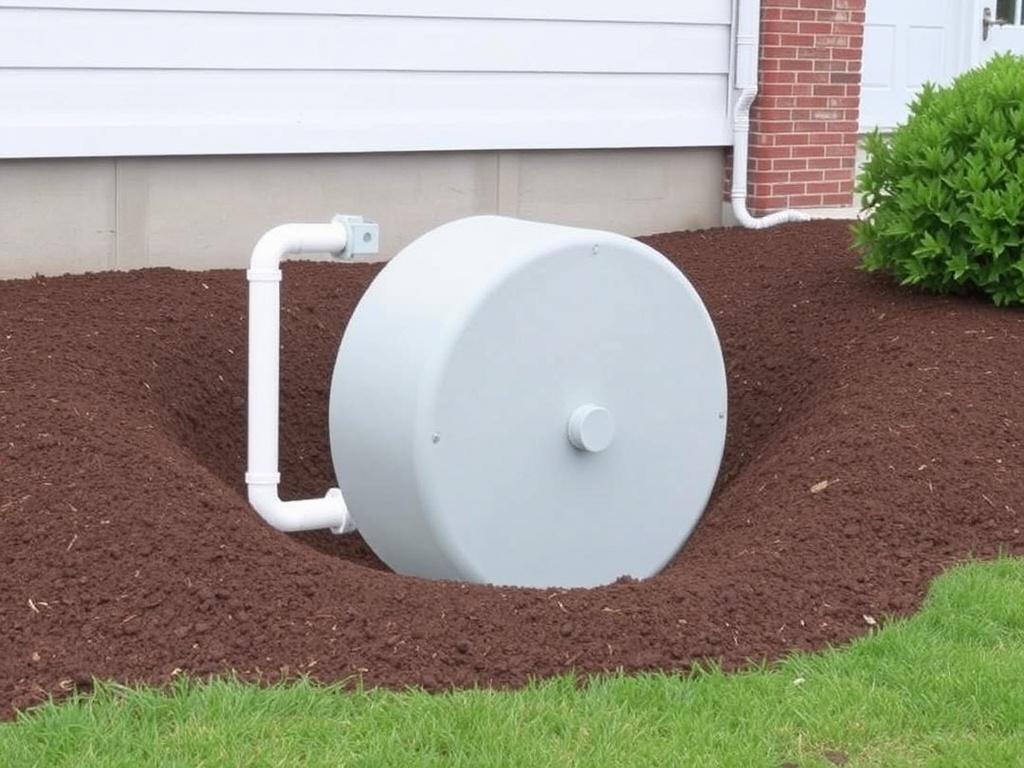Finding your septic tank can sometimes feel like searching for buried treasure. Whether you’re a new homeowner or have lived in your house for years without ever needing to know where the tank is, locating it can be crucial for maintenance, repairs, or proper septic system care. In this article, we’ll walk you through how to locate your septic tank with confidence and ease, using a variety of methods that don’t require professional tools or costly services. By the end, you’ll have the know-how to keep your septic system running smoothly and avoid costly surprises.
- Understanding Your Septic Tank and Why Location Matters
- Step 1: Check Your Property Records and Septic System Documentation
- Important Documents to Review
- What to Look for in the Records
- Step 2: Follow the Sewer Line to the Septic Tank
- How to Trace the Sewer Line
- What to Watch For
- Step 3: Use Visual Clues in Your Yard
- Common Visual Signs
- Step 4: Use Tools and Technology to Your Advantage
- Metal Detector or Probing Rod
- Septic Tank Locating Service
- Step 5: Mark and Map the Septic Tank Location
- Why Marking Helps
- Helpful Table: Common Septic Tank Locations on Properties
- Extra Tips for Septic Tank Maintenance and Safety
- Summary Checklist: How to Locate Your Septic Tank
- Conclusion
Understanding Your Septic Tank and Why Location Matters
Before diving into how to locate your septic tank, it’s important to understand what a septic tank is and why its location is important. A septic tank is an underground watertight container that collects and treats household wastewater. The waste separates: solids settle to the bottom, scum (grease and oils) float on top, and the liquid effluent flows to the drain field for further treatment. Because these components all work together, regular maintenance — like pumping the tank every few years — is necessary.
Knowing where your septic tank is located helps prevent damage to the system, allows for timely inspections and pumping, and helps you avoid planting trees or building structures on top of it. It’s not just a convenience — it’s a vital part of keeping your house and yard safe and healthy.
Step 1: Check Your Property Records and Septic System Documentation
The easiest and first step in how to locate your septic tank is to look for any existing documentation related to your septic system. When a house is built, septic system details are usually recorded.
Important Documents to Review
- Septic system installation permit
- Property plat or site plan
- Septic tank inspection records
- Home inspection report from when you purchased the house
Your local health department or county building office might also have records of the septic system’s location. These files typically include dimensions, distances from the house, and sometimes maps showing the exact location of the septic tank and drain field.
What to Look for in the Records
Most septic tanks are located between 10 and 25 feet from the house foundation, often directly downhill or following the direction of the drainpipes. Look for any notes on tank size, shape, and distance from landmarks such as the house, driveway, or property line.
Step 2: Follow the Sewer Line to the Septic Tank
When property records are unavailable or unclear, you can try to locate the septic tank by tracing the sewer line from the house. This method is a bit more hands-on but can often reveal the tank’s location without professional help.
How to Trace the Sewer Line
Start by locating the main sewer outlet inside the home — typically a cleanout pipe or the exit point of the main waste line in the basement or crawlspace. Next, head outside and look for where the sewer line exits the house, usually at ground level or just below it.
Using a metal probe or a thin rod, gently probe the soil about 10 to 20 feet from where the sewer line leaves the house. The septic tank is often along this path.
What to Watch For
Be careful not to damage any underground utilities. Call your local utility marking service before probing to avoid hitting electrical, gas, or water lines. Keep in mind that the ground above the septic tank might be slightly elevated or have a less dense type of grass growing due to the soil and moisture conditions inside the tank.
Step 3: Use Visual Clues in Your Yard
Sometimes, clues on the surface of your property can help pinpoint the location of your septic tank. Observing changes in your lawn or soil can be surprisingly useful.
Common Visual Signs
- Greener or Lush Patches of Grass: Wastewater leaking from a cracked tank or pipe can act as fertilizer, causing the grass above the tank or near leak points to grow more vigorously.
- Depressions or Mounds: The septic tank or its access cover may create a small mound or dip in the yard compared to the surrounding area.
- Unusual Soft Spots or Wet Areas: Soil above a compromised septic tank can feel softer or wetter than other areas due to leaking liquids.
While these signs help point you in the right direction, they are not foolproof. Sometimes, the yard shows no visible signs at all.
Step 4: Use Tools and Technology to Your Advantage
If the first three steps don’t give you a clear location, don’t worry. There are tools and affordable technology options that can help locate the septic tank safely and quickly.
Metal Detector or Probing Rod
If your septic tank has metal components such as the access cover or risers, a metal detector is a useful tool to locate the tank. Slowly scan the yard about 10 to 30 feet from the house. When you detect a metal object, carefully probe the soil to see if you’ve found the tank lid.
A thin probing rod or steel bar can be pushed into soft soil to feel for the tank’s buried edges, but always be cautious to avoid damaging the tank or underground pipes.
Septic Tank Locating Service
For a more professional approach, some companies offer septic tank locating services. They use ground-penetrating radar or specialized cameras to find the tank without excavation. While this option costs money, it’s worth considering if your yard is very large or if you need precision for repairs or construction.
Step 5: Mark and Map the Septic Tank Location

Once you’ve found your septic tank, take time to mark its location clearly. Use visible markers such as flags or stakes to save the location coordinates.
Keeping a simple sketch and measuring from fixed points like your home’s foundation, driveway, or property lines can help you remember the exact location in the future.
Why Marking Helps
Marking the tank site protects it by preventing accidental damage from digging or heavy equipment. It also speeds up future septic maintenance tasks such as pumping and inspections, saving you the hassle and expense of hunting for the tank again.
Helpful Table: Common Septic Tank Locations on Properties

| Property Feature | Typical Distance from House | Notes |
|---|---|---|
| Front Yard | 10-20 feet | Often near the sewer exit pipe |
| Side Yard | 15-25 feet | Common if the house design places sewer lines to the side |
| Back Yard | 20-30 feet | Typically downhill or behind the house |
Extra Tips for Septic Tank Maintenance and Safety
As you locate your septic tank, remember some valuable tips for keeping your system healthy. Avoid driving heavy machinery or parking vehicles over the tank area, as weight can damage the tank or pipes. Don’t plant trees or shrubs with deep roots nearby, since roots can cause cracks.
It’s also wise to keep a septic tank maintenance schedule and service your system every three to five years depending on the tank size and household usage. Regular inspections and pumping prevent costly repairs and keep your septic system functioning long-term.
Summary Checklist: How to Locate Your Septic Tank
- Review property and septic system records for maps or permits.
- Trace the sewer line from inside your house to where it exits.
- Look for surface signs like greener grass or soil depressions.
- Use a metal detector or probing rod to physically locate the tank.
- Consider a professional septic tank locating service if uncertain.
- Mark the location clearly for future reference and system protection.
Conclusion

Locating your septic tank doesn’t have to be a daunting mystery. By taking a systematic approach—starting with your home’s records, then following sewer lines, observing yard clues, and using simple tools—you can find your septic tank without guesswork or expensive unplanned excavations. Remember, knowing the exact spot helps you protect your septic system, perform timely maintenance, and avoid costly damage to your property. Whether you’re preparing for routine pumping or planning backyard renovations, this step-by-step guide will empower you to confidently locate your septic tank and take charge of your home’s wastewater system with ease.
Помогла вам статья?






